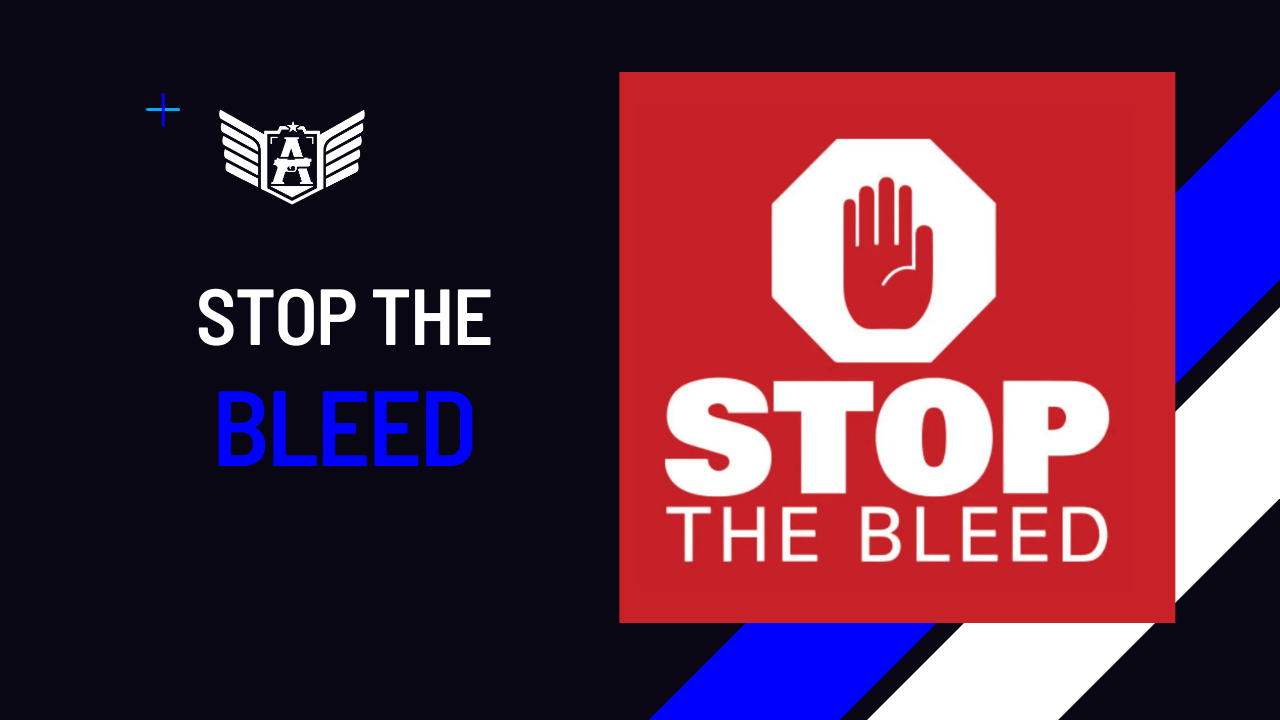*Content extracted from stopthebleed.org
Our Story
STOP THE BLEED® is the result of a collaborative effort led by the American College of Surgeons Committee on Trauma (ACS COT) to bring knowledge of bleeding control to the public. The ACS COT, and specifically the EMS subcommittee with its many collaborative relationships, provided the perfect environment for this program to grow into the critical success that it is today.
Lessons learned from the military
There are multiple ways to control bleeding in an emergency, including applying direct pressure, packing the wound with bleeding control (hemostatic) gauze, and applying a tourniquet. However, it is only recently that tourniquets have been re-embraced for their lifesaving potential. After tourniquets and tourniquet training were widely adopted by the military, their use during the Iraq and Afghanistan conflicts was reviewed in 2012 and a clear survival benefit was identified. Under the leadership of Retired U.S. Navy Captain Frank K. Butler, Jr., MD, FAAO, FUHM, this data was carefully evaluated and then included in the Tactical Combat Casualty Care (TCCC) standards for training and military field care. A follow-up study in 2014, led by the ACS COT EMS subcommittee, showed similar benefits related to tourniquet use amongst civilians and further introduced direct pressure and wound packing to the list of simple but effective skills that could be used to control active bleeding in an emergency situation.
When these efforts were looked at collectively, the life-saving potential of early bleeding control became clear. It also became clear that time was a critical factor and outcomes were directly related to how quickly bleeding control was achieved. These findings would ultimately help establish the bystander as playing a critical role in saving lives due to severe bleeding. Efforts to train bystanders soon began in earnest.
Developing a bleeding control curriculum
Peter T. Pons, MD, FACEP, an emergency physician in Denver, CO, and a member of the Pre-Hospital Trauma Life Support (PHTLS) committee of the National Association of Emergency Medical Technicians (NAEMT), is credited with the initial idea to develop a curriculum focused on bleeding control that was similar to how cardiopulmonary resuscitation (CPR) prepared bystanders for a cardiac emergency. Working with Norman E. McSwain, Jr., MD, FACS, medical director of PHTLS and a liaison to the ACS-COT at the time, they developed a course that addressed this need. Early versions were targeted toward non-medically trained law enforcement officers, but it soon became apparent that this content could also be made available to the general public. These ideas were the genesis of what became known as the Bleeding Control Basic (B-CON) course, which was released to the public in 2014 and forms the foundation of today’s STOP THE BLEED® course.
Out of great tragedy, comes a life-saving response
The evolution of the STOP THE BLEED® program was also influenced by world events. In 2012, 20 children and eight adults were casualties from a tragic mass shooting at Sandy Hook Elementary School in Newtown, CT. A concerned local trauma surgeon who was the Chair of the Connecticut State Committee on Trauma and an ACS Regent, Lenworth M. Jacobs, Jr., MD, FACS, convened a panel of national experts to evaluate the response to such emergencies.
The group met several times and developed expert recommendations on how to improve survival for people with severe bleeding. Because two of these early meetings were held in Hartford, their recommendations became known as the Hartford Consensus (pictured below).

Establishing STOP THE BLEED® as a national public awareness campaign
From the Hartford Consensus, a national emergency response goal emerged to improve victim survival following mass shootings and other intentional acts of mass violence by empowering trained bystanders to take life-saving action if quickly needed—regardless of the situation or cause of severe bleeding. STOP THE BLEED® , a national public awareness campaign, was launched shortly thereafter, in October of 2015 by the White House, with a call to action to begin training more people to become immediate responders until professional help arrives.*
Since then, the STOP THE BLEED® program has continued to grow as we continue to witness or experience unexpected violence and injuries in our daily lives—on the highway, in the workplace, at schools, and in other public places where we should be able to gather with an expectation of safety. The ACS Committee on Trauma first publicly introduced bleeding control training courses for its members in October 2016, and since then thousands of other medical professionals have trained to become course instructors. Today, those instructors are focused on training people in all walks of life to become immediate responders through the STOP THE BLEED® course.
If you’d like to learn more about the origins of STOP THE BLEED® , read the proceedings document of the Hartford Consensus online. It is called Strategies to Enhance Survival in Active Shooter and Intentional Mass Casualty Events: A Compendium.
Tourniquet Training
Dr. Lenworth Jacobs shows trainees the proper way to use a tourniquet.
STOP THE BLEED® is a registered trademark of the U.S. Department of Defense, Defense Health Agency. All rights reserved. © DoD.
The American College of Surgeons’ STOP THE BLEED® program is operated pursuant to a licensing agreement granted it by the Department of Defense




